 |
 |
| |
|
| |
ABOUT TURKEY. Turkey's country profile

|
| |
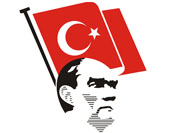
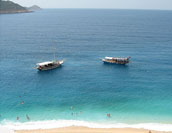
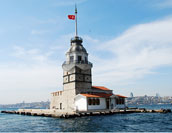
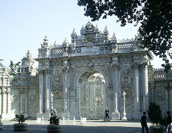 |
|
| |
|
|
| |
For an unforgettable holiday that is both different and special, Turkey is a favorite in any tourists travel itinerary. Surrounded by sea on three sides the five thousand mile coastline delivers on the promise of a sun soaked holiday a far cry from the stress and strain of the daily grind. Beautiful throughout the year, the months from April to October however are the best time for a visit to Turkey.
If one can pull oneself away from the endless joys of frolicking in the sun drenched waves a gastronomical spread of delicious Turkish cuisine awaits the most discerning palate. After enjoying the meze-a meal of many tiny offerings of local dishes, followed by the unique red or white Turkish wine the sumptuous meal is usually concluded with the irresistible naturally flavored deserts that follow.
Turkey however is much more than a hospitable naturalist's haven, as
it also offers knowledge hungry tourists a taste of a bygone era.
Steeped in history, tourism in Turkey has much to offer on the
historical front too. Spanning ten thousand years with the traces of
thirteen successive civilizations makes it an intriguing mix of both
European modernity and Middle eastern mystique.
When it comes about Turkey, holiday makers in Turkey find to their delight a city of contrasts
ranging from modern skyscrapers to minarets of ancient mosques.
Luxurious malls alongside bazaars selling locally grown exotic
produce has a visitor to Turkey enjoying the best of the western
world co-existing effortlessly with the past. A stroll through
legendary landmarks like the Blue Mosque
and Hagia Sophia or the
crusader castles in the southern coastal towns of Bodrum and
Alanya
are a history buffs delight.
The tourist who thinks that Turkey is known for its largely Moslem
history is in for a surprise if a journey along the footsteps of
Saint Paul is also taken. This early Christian saint born in Tarsus,
reveals the travails of spreading the Christian gospel in areas
which make up the history about Turkey.
Tourists who feel their visit in Turkey is complete once they have
had their memorable walk down history, often wish to return as they
sense that there is so much left to learn of this land, which had
countless battles fought to get a piece of the rich culture it still
retains.
The straddling of two continents has meant that
Turkey has always offered the world a unique mixture of both Western
and Eastern culture. The country has a powerful cultural, economic,
and historical presence, in its region of the world. And, currently
often serves as a gateway between the western European Union,
eastern Central Asia, northern Russia, and southern Middle East.
|
|
| |
|
|
| |
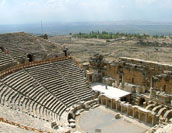
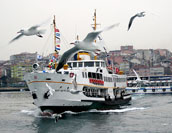
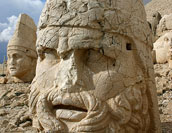
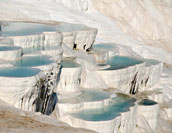 |
|
| |
History about Turkey:
The region of Asia Minor, which comprises most of today's modern
Turkey, is one of the world's oldest and continually inhabited
geographic regions of the world, as demonstrated by some of the
earliest human settlements discovered in the area. As an example,
the historical settlement of Troy, and the associated location of
the Trojan War, was located in Turkey. Today, Turkey is a democratic
country, with an increasingly liberalized economy.
Geographical Regions about Turkey:
Turkey is comprised of seven geographical regions. These include:
the Aegean; the Black Sea; Central Anatolia; East Anatolia;
Southeast Anatolia; Marmara; and the Mediterranean region.
The Aegean region of Turkey, reaches from the Aegean sea to the
inner sections of western Anatolia. The lands of the Black Sea
region form a lengthy and narrow belt, along the terrain of the
north of Turkey. The Central Anatolia region is located in the exact
middle of the country, and relatively flat, whereas Eastern Anatolia
is the largest and extremely mountainous. In comparison, the
Southeast Anatolia region is fairly uniform in geography. The
Marmara region circles the Sea of Marmara and includes the European
section of Turkey. And, lastly, the Mediterranean region is
comprised of the southern part of the country, and features both the
Taurus and Amanos mountains.
|
|
| |
|
|
| |
Geographical Profile of Turkey:
As mentioned, Turkey has a unique location of being a
transcontinental Eurasian country. This distinction has divided the
country into two sections - Asian Turkey and European Turkey. Asian
Turkey makes up 97 percent of the more than 300,000 square miles of
the country, while European Turkey is only 3 percent of the area.
Surrounded by seas on three of its sides, and hosting the Sea of
Marmara as well as its highest peak, Mt. Ararat, Turkey is the 37th
largest country in the world.
Coastlines of Turkey:
Three seas bound the country of Turkey, including: the Black Sea, to
the north; the Aegean Sea, to the west; and the Mediterranean Sea to
the south. This has resulted in thousands of miles of coastline, for
the country.
Rivers of Turkey:
Turkey features a variety of rivers that often flow into one of the
three seas that border Turkey. Three of the longest rivers in
Turkey, the Yesilirmak, Kizilirmak, and Sakarya all lead into the
Black Sea. Whereas The Kucuk Menderes, Gediz, Meric, Buyuk Menderes
all flow into the Aegean. The Ceyhan, Seyhan and the Goksu pour into
the Mediterranean. And, The Biga, Gonen, and Susurluk all flow into
the internal Sea of Marmara. The exception to this rule is the Dicle
(Tigris) and the Firat (Euphrates), which come together in Iraq,
before then flowing into the Persian Gulf.
Places to see :
When visiting Turkey, there are so many places to see, and places to enjoy like
different iconic sceneries and different hotel casinos like Casino Merit Crystal
Cove where you can
play poker,
roulette and blackjack. You may find
yourself already planning your next trip while you're still there!
The ruins of Ephesus and the city of Bodrum, which was the site of
King Mausolous' Tomb, on the Seven Wonders of the World, are must
sees in the Aegean region. Sinop, in the Black Sea region, is one
the country's most beautiful sea harbors, and features a fascinating
Archaeological Museum. If you find yourself in Eastern Anatolia,
seeing the tallest peak in Turkey, Mt. Ararat is a must, and perhaps
you'll be the one who finally discovers the location of Noah's Ark!
Climate about Turkey:
Because of Turkey's diverse geography, the climate is equally
varied. The coastal regions are mostly temperate; however, interior
regions of the country range from hot and sunny in the summer to
cool, and in the more mountainous regions cold, in the winter.
Economy:
Agriculture is Turkey's traditional economic base. However,
industrial good have become increasingly important with
globalization, and tourism has developed rapidly over the last
decade.
Turkey currency:
The currency in Turkey is Turkish Lira(Turk Lirasi). Most of the sellers accept foreign curreny especially in the coastal resorts. Master and Visa credit cards widely acceptable. You can withdraw local currency from the ATM machines everywhere.
You can check currency rates from the
Central bank of Turkey.
Population & People:
There are more than 66 million people in Turkey, with 99 percent of
the Turkish population Muslim. The reforms instituted by Ataturk has
modernized much of the country, but there are still cultural
distinctions between Turkey and the West. The people of Turkey, in
general, are very hospitable and and are bound by honor to be the
best host possible.
Education:
There is only eight years of compulsory primary and middle school
for children. Post middle school education, in the is available,
including universities and private colleges.
|
|
| |
|
|
| |
|
|
| |
|
|
| |
|
|
|
<-Back
|
|
 |
|
